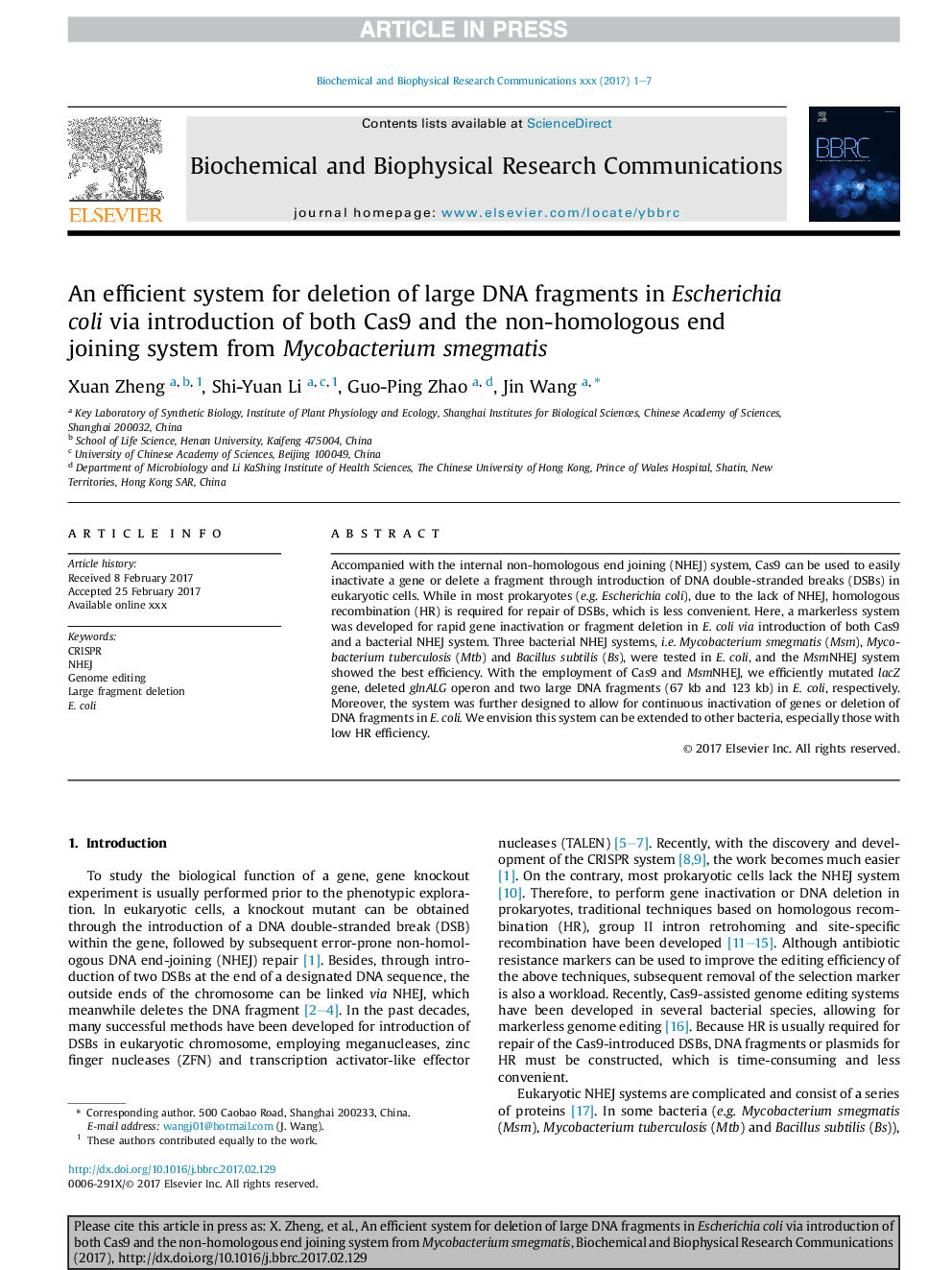| کد مقاله | کد نشریه | سال انتشار | مقاله انگلیسی | نسخه تمام متن |
|---|---|---|---|---|
| 5506118 | 1400286 | 2017 | 7 صفحه PDF | دانلود رایگان |
عنوان انگلیسی مقاله ISI
An efficient system for deletion of large DNA fragments in Escherichia coli via introduction of both Cas9 and the non-homologous end joining system from Mycobacterium smegmatis
دانلود مقاله + سفارش ترجمه
دانلود مقاله ISI انگلیسی
رایگان برای ایرانیان
موضوعات مرتبط
علوم زیستی و بیوفناوری
بیوشیمی، ژنتیک و زیست شناسی مولکولی
زیست شیمی
پیش نمایش صفحه اول مقاله

چکیده انگلیسی
Accompanied with the internal non-homologous end joining (NHEJ) system, Cas9 can be used to easily inactivate a gene or delete a fragment through introduction of DNA double-stranded breaks (DSBs) in eukaryotic cells. While in most prokaryotes (e.g. Escherichia coli), due to the lack of NHEJ, homologous recombination (HR) is required for repair of DSBs, which is less convenient. Here, a markerless system was developed for rapid gene inactivation or fragment deletion in E. coli via introduction of both Cas9 and a bacterial NHEJ system. Three bacterial NHEJ systems, i.e. Mycobacterium smegmatis (Msm), Mycobacterium tuberculosis (Mtb) and Bacillus subtilis (Bs), were tested in E. coli, and the MsmNHEJ system showed the best efficiency. With the employment of Cas9 and MsmNHEJ, we efficiently mutated lacZ gene, deleted glnALG operon and two large DNA fragments (67 kb and 123 kb) in E. coli, respectively. Moreover, the system was further designed to allow for continuous inactivation of genes or deletion of DNA fragments in E. coli. We envision this system can be extended to other bacteria, especially those with low HR efficiency.
ناشر
Database: Elsevier - ScienceDirect (ساینس دایرکت)
Journal: Biochemical and Biophysical Research Communications - Volume 485, Issue 4, 15 April 2017, Pages 768-774
Journal: Biochemical and Biophysical Research Communications - Volume 485, Issue 4, 15 April 2017, Pages 768-774
نویسندگان
Xuan Zheng, Shi-Yuan Li, Guo-Ping Zhao, Jin Wang,